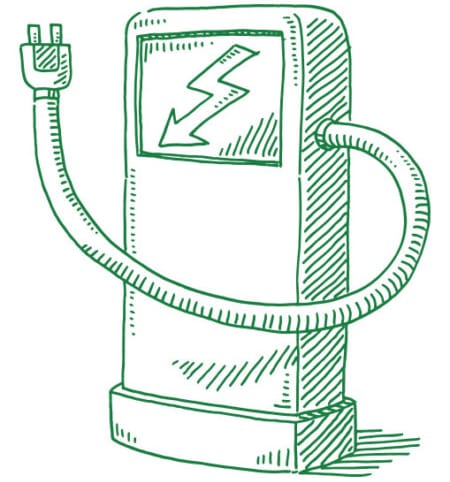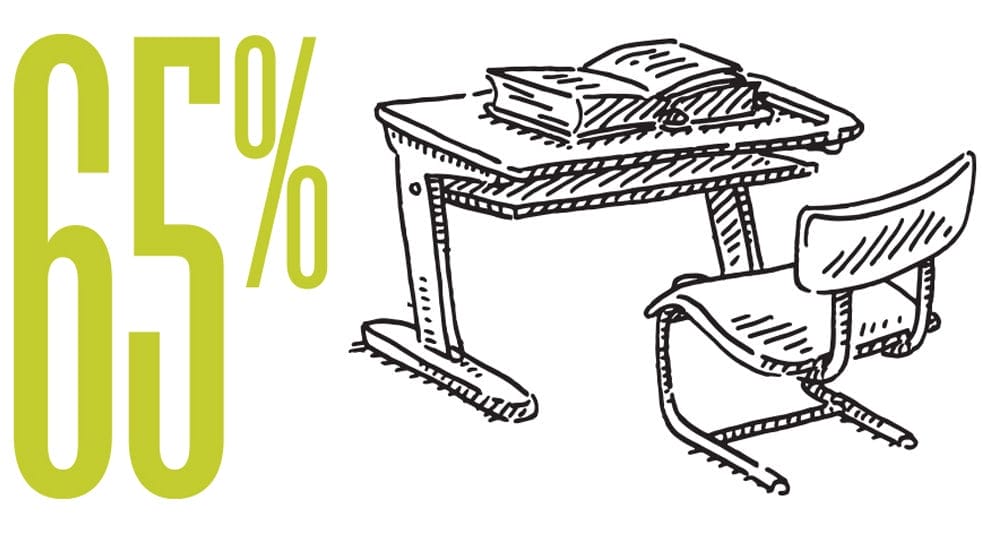DATA INTERPRETED
The year by which a presidential executive order calls for 50 percent of all new U.S. vehicles sold to be electric
In an interview with Wharton Business Daily (SiriusXM 132), management professor John Paul MacDuffie cited consumer reluctance and charging infrastructure as two major hurdles to achieving this goal. “People have to be willing to make some changes in their refueling habits to go with this new technology,” MacDuffie said.
THOUGHT
 “The basic strategy that everybody is following is ‘Just get big.’”
“The basic strategy that everybody is following is ‘Just get big.’”
In a conversation with Wharton School Press, Wharton health-care management professor Lawton R. Burns examines how growth and expansion by U.S. health-care systems contribute to problems such as rising health-care costs. Burns and David Dranove of the Kellogg School of Management are co-authors of Big Med: Megaproviders and the High Cost of Health Care in America. Growing organizations in this way, the authors argue, doesn’t translate into value.
THOUGHT
Why Declining Entrepreneurship Isn’t Cause for Concern
Entrepreneurship in the U.S. has decreased in recent decades because highly skilled college graduates have found they can earn more in well-paying jobs than by starting their own businesses. Lower costs of capital goods have also helped businesses become more profitable and, in turn, increased those businesses’ ability to hire highly skilled workers who would otherwise have become entrepreneurs. Such factors, writes Wharton finance professor Sergio Salgado in the paper “Technical Change and Entrepreneurship,” are responsible for three-quarters of the observed decline in entrepreneurship. In contrast to other studies that have cited high startup costs, labor supply constraints, and an aging population as the main causes, his findings bring a new understanding to the debate on the decline of American entrepreneurship.
Salgado’s research produced three primary findings. First, the share of entrepreneurs among U.S. households declined from roughly eight percent in 1985 to four percent in 2014. The study also found that the decline in the share of entrepreneurs was larger among college graduates, from roughly 12 percent to five percent in the same period; that decline was less pronounced among noncollege graduates — from 4.7 percent to 2.7 percent. Third, the “entry rate into entrepreneurship,” or share of households starting businesses each year, has fallen in recent decades.
“Several researchers and policymakers have considered the decline in firm creation and overall dynamism as a negative development,” Salgado writes. That shouldn’t be the case, he argues, calling the decline an “equilibrium response to technological improvements that have changed the incentives of individuals to start their own businesses.”
“The concern should not be about the share of entrepreneurs,” says Salgado. “Instead, you may want to ask how to make existing entrepreneurs more productive.” As part of his study, Salgado considered how a subsidy on borrowing costs could impact trends. Loan subsidies certainly would generate substantial benefits to the economy, according to the paper. But they wouldn’t necessarily increase the number of entrepreneurs. “A fixed subsidy is unable to undo the impacts of the technological changes affecting the economy,” Salgado writes.
The phenomenon of fewer entrepreneurs may also have to do with a chipping away of the edges. “From the lens of my model, you’re not losing the next Bill Gates or the next Steve Jobs — they will do whatever can be done to finance their firms,” says Salgado. “We’re losing those that are between being at work and being an entrepreneur — the marginal entrepreneur.”
DATA INTERPRETED
 More than this percentage of non-traditional students — such as working parents and first-generation college students — drop out before finishing their intended studies.
More than this percentage of non-traditional students — such as working parents and first-generation college students — drop out before finishing their intended studies.
That’s according to Katy Kappler, CEO of InScribe, an AI-powered app providing community support/on-demand resources to college students. InScribe is the winner of the 2021 Turner MIINT competition, a collaboration between the Bridges Impact Foundation and the Wharton Social Impact Initiative.
THOUGHT
“As soon as I realize that somebody has a different point of view, I acknowledge my own shortcomings. … It invites the other person to commit to openness, too.”
Not seeing eye to eye with someone? In an Ivy Exec webinar sponsored by the Wharton MBA for Executives Program and moderated by Dean Erika James, management professor Adam Grant offered this tactic as an effective way to approach disagreements. The two discussed the importance of questioning assumptions regarding how to engage and communicate in the workplace, with Grant recalling how he changed his approach after a student called him a “logic bully.”
DATA INTERPRETED
 Executives conveying confidence in their company’s ability to manage political risk.
Executives conveying confidence in their company’s ability to manage political risk.
Reported in “Geostrategy in Practice 2021,” a survey conducted in part by the Wharton Political Risk Lab, this figure is down from 74 percent of executives in the previous year’s survey who expressed such confidence.
(Illustrations: Charging station — Frank Ramspott; Dollar sign — Devrimb; Warning sign — Nataliashein; Desk — Frank Ramspott)
Published as “Data” in the Fall/Winter 2021 issue of Wharton Magazine.






















 “The basic strategy that everybody is following is ‘Just get big.’”
“The basic strategy that everybody is following is ‘Just get big.’”
 More than this percentage of non-traditional students — such as working parents and first-generation college students — drop out before finishing their intended studies.
More than this percentage of non-traditional students — such as working parents and first-generation college students — drop out before finishing their intended studies. Executives conveying confidence in their company’s ability to manage political risk.
Executives conveying confidence in their company’s ability to manage political risk.



